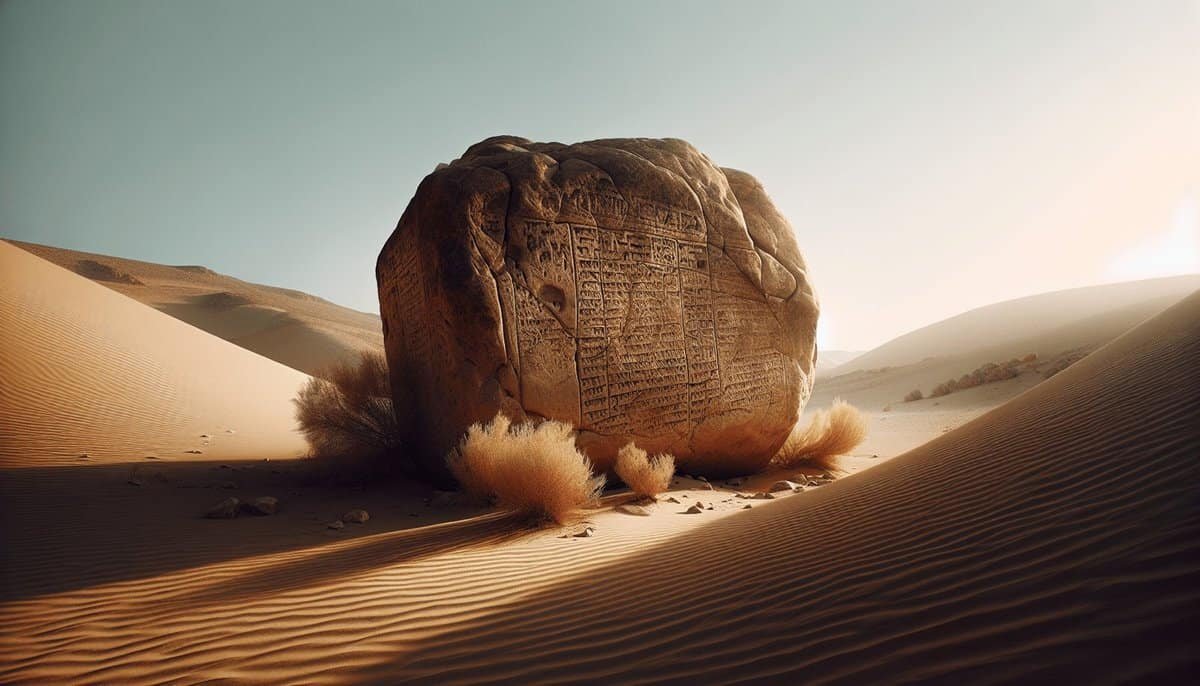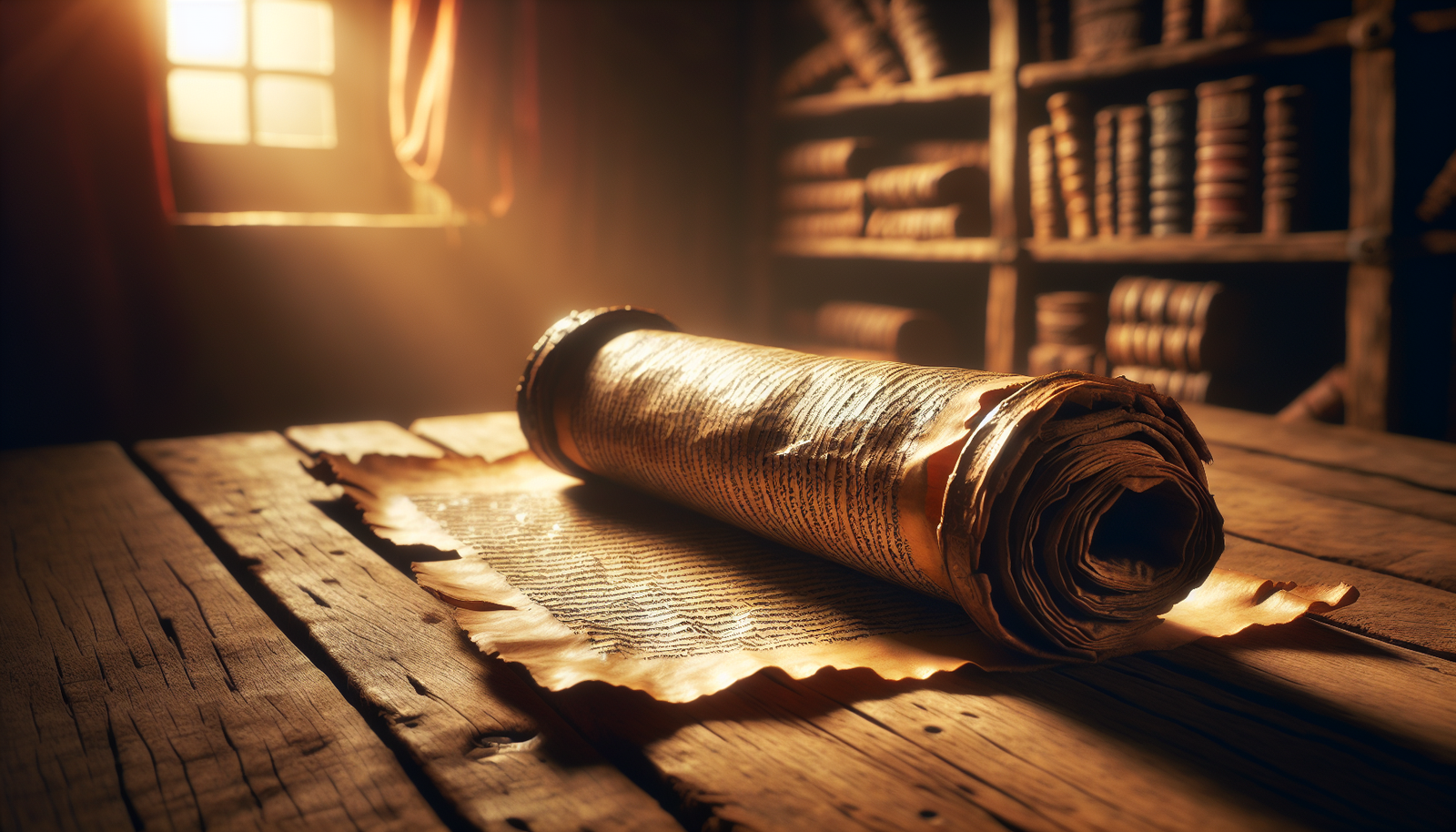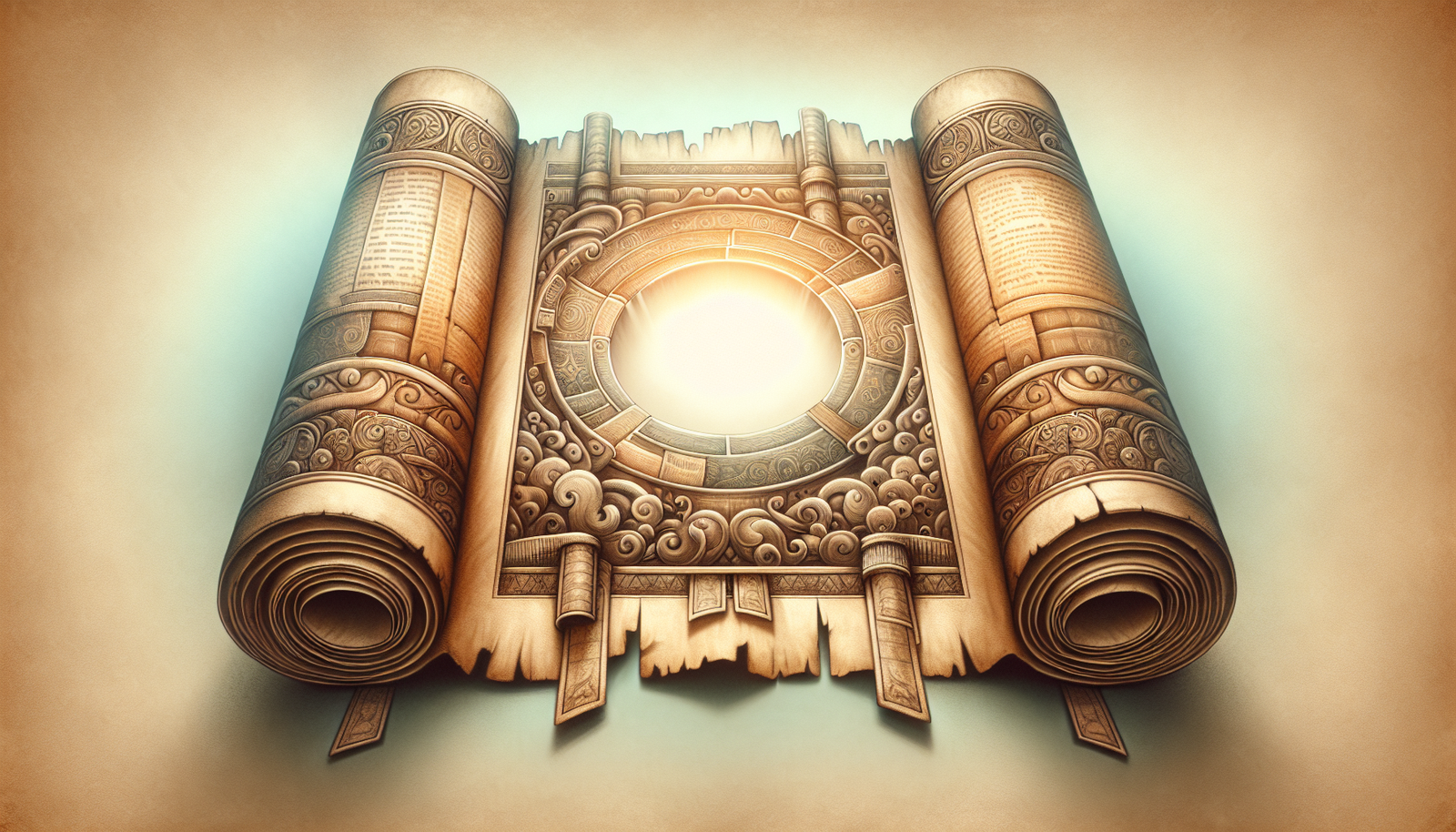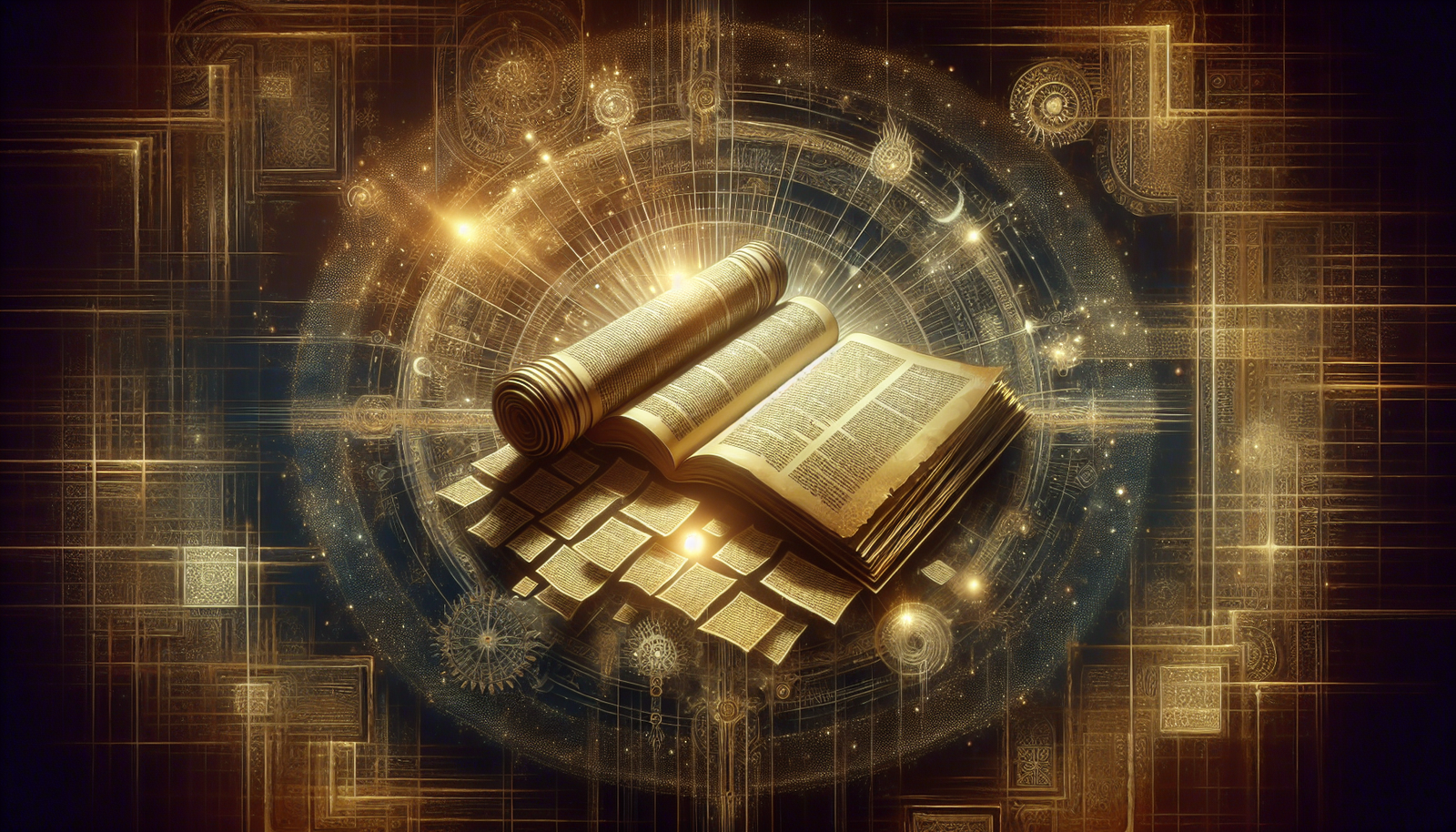What secrets lie beneath the dust of the desert where ancient manuscripts once whispered their stories?
The Qumran Boulder Mark, associated with the famed Dead Sea Scrolls, is a point of intrigue for both scholars and enthusiasts. Your curiosity might have piqued at the intersection of history and archaeology, and considering the enduring impact of these texts, it’s time to unravel how they relate to our contemporary understanding of culture and faith.
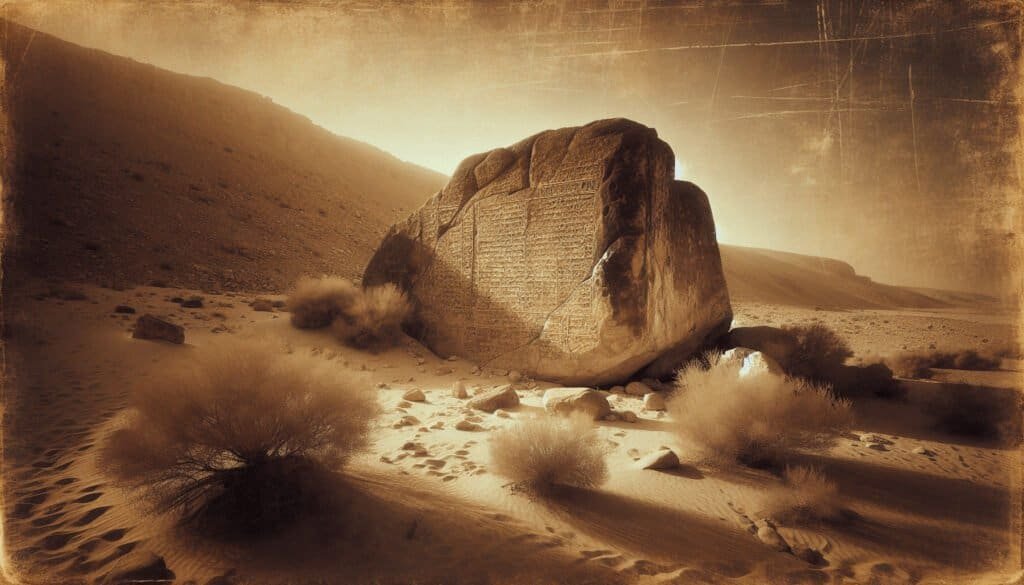
The Qumran Community and Its Historical Backdrop
The Qumran community, often discussed in the context of the Dead Sea Scrolls, flourished during the late Second Temple period. This was a time of significant social and political upheaval in Judea, with various sects vying for followers and asserting their interpretations of Jewish law. If you consider the tumultuous atmosphere of the 1st century BCE and CE, it’s not surprising that a group emerged, seeking a more austere, ascetic life that they believed was in line with God’s expectations.
The Role of the Dead Sea Scrolls
The Dead Sea Scrolls, discovered between 1947 and 1956 in eleven caves near Qumran, consist of texts that date back to the third century BCE up through the first century CE. These manuscripts encompass a broad spectrum of literature, including biblical texts, sectarian writings, and liturgical material. You may wonder why these texts are so crucial. Well, they provide unparalleled insights into the theological, cultural, and social environment of the time.
Significance of the Scrolls
- Biblical Manuscripts: The texts shed light on the transmission of the Hebrew Bible, offering variants that can reshape our understanding of biblical history.
- Sectarian Literature: Writings like the Community Rule present the beliefs and practices of the Qumran sect, which can illuminate early Jewish thought and its evolution.
- Apocalyptic Texts: Many scrolls reflect a fascination with the end times, resonating with themes familiar to many religious traditions today.
Decoding the Qumran Boulder Mark
The Qumran Boulder Mark has derived particular interest from scholars studying the archaeology of the region. It’s more than just a rock; it’s a tangible link to the past, rich with potential insights into the beliefs and practices of those who lived by the Dead Sea.
What is the Boulder Mark?
The Boulder Mark is an inscribed stone found near the Qumran ruins, thought by some to be a physical marker of the community’s boundary or a significant site. You could think of it as an ancient “property line,” indicating where the sacred ended and the mundane began.
Analyzing the Mark
- Inscription Analysis: Scholars have spent years deciphering the inscriptions, revealing both linguistic and cultural significance that helps them understand the community’s identity.
- Material Composition: The boulder itself provides clues about the geological surroundings, telling us about the environment the Qumran community inhabited.
Restoration Efforts: Preserving History
As with many ancient artifacts, the preservation of the Qumran Boulder Mark has become essential for future study and appreciation. The harsh conditions of the desert environment can wreak havoc on materials over time, with erosion and weathering threatening the integrity of both the boulder and its inscriptions.
Why Restore?
You might ask, “Why go through the trouble to restore such a relic?” The answer lies in the educational and cultural value of these historic artifacts. Here’s a look at some of the reasons for restoration:
Educational Value
- Enhancing Understanding: Restoration allows scholars to better analyze the marks without losing the historical context they hold.
- Public Engagement: A restored mark can draw attention and foster interest in the Qumran community, leading to a deeper understanding of its place in history.
Cultural Significance
- Heritage Protection: The Boulder Mark serves as a symbol of cultural heritage for many, especially within the Jewish communities. For them, the mark represents a connection to their past.
- Theological Implications: For theologians and religious individuals, the inscriptions may hold answers to ancient questions that still resonate today.
Challenges in Restoration
Restoration isn’t as simple as it might seem. Significant challenges plague archaeologists and conservators alike when dealing with artifacts like the Qumran Boulder Mark.
Environmental Factors
- Desert Climate: The extreme temperatures and fluctuations between day and night can adversely affect materials, leading to cracking and other forms of deterioration.
- Erosion: Wind and sand can wear down even the sturdiest stone markings over time.
Human Factors
- Vandalism: Unfortunately, human interference can exacerbate the issues. Vandalism has been a recurring problem at archaeological sites, leading to unwarranted wear on delicate inscriptions.
- Funding and Resources: Restoration projects often require significant funds, which can be a barrier to comprehensive conservation efforts.
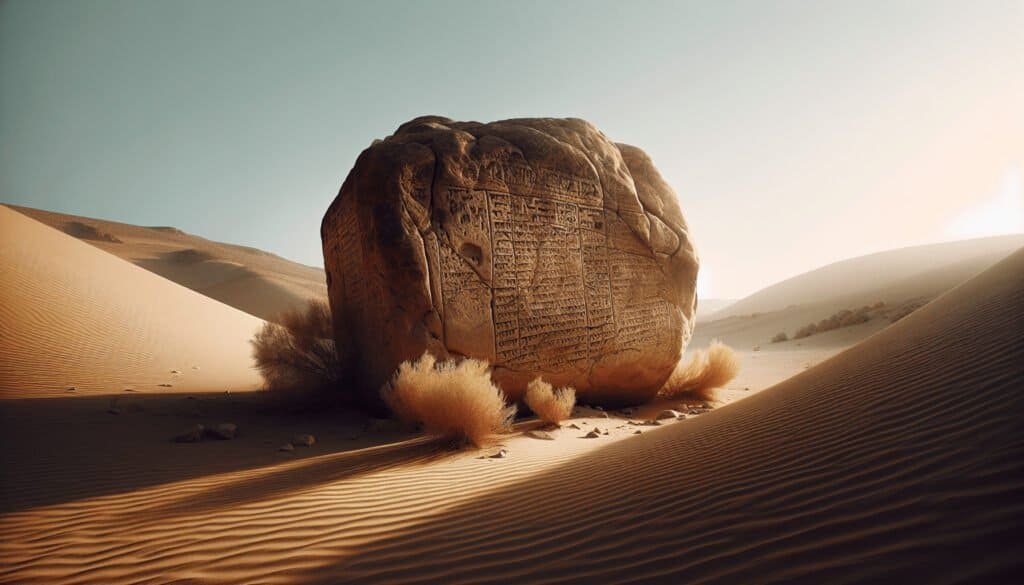
The Archaeological Significance of Qumran
Engaging with the Qumran Boulder Mark allows us to appreciate the wider archaeological significance of Qumran itself. The site isn’t just a relic but a representation of a critical moment in Judaism’s evolution.
Qumran as a Cultural Crossroads
The Qumran site serves as a landmark of cultural and religious transition. You may consider how it exemplifies the tensions between various sects during its time.
Evidence of Diverse Beliefs
- Sectarian Texts: The findings underscore a community wrestling with its identity, challenging normative beliefs, and developing unique practices.
- Community Practices: Archaeological digs have uncovered spaces believed to be used for communal dinners, ritual baths, and study areas, pointing to a life rich in religious devotion.
Theological Implications
When we think about the theological implications of the Qumran Boulder Mark, it brings to mind many enduring questions.
Scripture Interpretation
The restoration and study of the Boulder Mark might illuminate some of the contended aspects of religious texts. Scholars have often debated the interpretations of various scriptural passages, and the Qumran writings might provide crucial context.
Exploring Messianic Expectations
Much of what survives from the Qumran community reflects an expectation of messianic figures. Your engagement in this topic could lead to fascinating discussions about how different groups within Judaism viewed redemption and the coming of a savior during a tumultuous period.
Bringing Ancient Insights to Modern Perspectives
How do ancient artifacts like the Qumran Boulder Mark inform our world today? In this fast-paced modern life, there’s something grounding about connecting with history and examining how the past continues to influence the present.
Historical Reflections on Today’s World
- Cultural Memory: The interplay of cultural memory, religious identity, and heritage preservation emphasizes the importance of understanding where we come from.
- Moral Lessons: The texts and artifacts from Qumran often concern moral dilemmas and ethics, which remain relevant. They prompt you to reflect on how ancient wisdom continues to inform modern life.
The Future of the Qumran Boulder Mark
As restoration efforts continue, you can consider the possibilities ahead for the Qumran Boulder Mark. Continued interdisciplinary collaboration among historians, archaeologists, and conservators could lead to groundbreaking discoveries.
Innovations in Preservation
Advancements in technology could transform the way restorations are approached. Non-invasive techniques might allow for gathering data without compromising the artifact’s integrity.
Broader Impacts on Archaeology
As insights from the Qumran Boulder Mark emerge, they could provoke deeper inquiries into the cultural and religious landscape of ancient Judea.
Conclusion: Connecting Past and Present
While the Qumran Boulder Mark may merely appear to be a rock, beneath its weathered surface lies a treasure trove of historical significance and cultural insight. The restoration efforts surrounding this artifact not only aim to preserve a piece of history but also to enrich our understanding of the past’s impact on contemporary society. As you digest this intersection of archaeology, theology, and cultural heritage, may it encourage you to appreciate the enduring legacies of those who came before us and how their stories continue to shape our lives today.
In the rich landscape of archaeological discoveries, the hopes for the Qumran Boulder Mark reflect a broader narrative of seeking understanding amidst the sands of time. It resonates within you, inviting reflection on how the past molds our identities and informs our shared human experience.
